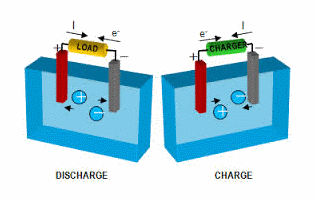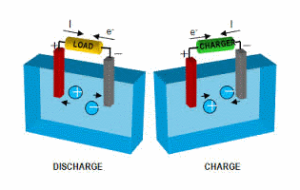Solar Battery Buying Basics
So, you want to buy a solar battery but have no clue where to start? Need help in working out what’s right for you? Or perhaps you have an idea but dont know what all the terms mean?
In this guide we will take you through the basics of what you need to know before buying a battery, we will keep the information light but cover the important points:
How much storage do you need?
Simple question, if you know the answer you can just switch to our calculator here. If not, what you will need is an idea of how much power you are trying to store. You need to work this out in kWh (kilowatt hour) or if a small system, in terms of Wh (watt hour). If you are new to this concept or unsure, consider the following, note the bold text stating battery type:
Define your needs – What are you trying to do?
Go completely off grid?
- If you are going completely off grid then your battery becomes critical. It needs to not only store your daily consumption, but also needs to store days where your solar (assuming solar system) are underperforming due to weather. Some people try to offset the poor weather days by adding a small wind turbine to the system. As a concept this is feasible only if you are in a good wind region but for a number of people this simply isn’t an option.
- If you have no existing electricity bill, you will need to asses your off grid requirements by doing the horrible task of a manual energy audit. This is that nasty boring task where you write up your list of power drawing devices that you intend to add to the system. The format is best done on excel for easy calculation like in our Energy Assessment Calc Sheet. The objective being to tabulate your worst possible consumption scenarios and design from there.
- Another design consideration is whether you have access to Eskom/Utility/Generator but are choosing not to use it. At present it is still cheaper to utilise either of these resources as a back up to days without good energy generation due to weather. Thus even though you may be able to size bad days these into your battery bank, you should consider to rather use existing linked sources.
- SUGGESTED BATTERY TYPE 3 OR 4
Go Partially Off Grid?
- Everything starts somewhere. This system typically is designed to keep your power bill down by utilising the PV/Wind sources during daytime for both power and charge, it will also have a small battery bank on it to lean on in the event of a load shed/power interruption. The difference with this battery system and a typical load shed or UPS style system is that it is designed to power your entire load. Commonly the battery will form a part of integrated use, meaning that its cycled daily on the system. Battery requirements are generally larger but unlike an off grid system power sources are freely available between Eskom/Utility or RE power source.
- So how much power required on store? Generally speaking you would do one of the following things:
- Use an Energy Owl or other power meter to determine hourly consumption. Then calculate the number of hours you would want to be on battery in terms of kWh.
- Use your electricity bill as a guideline. Either take the entire electrical load for the day (meaning an entire day on store) or take a partial amount by roughly calculating the total days kWh and dividing it by number of usable hours in a day. i.e. Not 24 hours because you sleeping most of it, use 12 or 16 hours. Its entirely up to you.
- Experience guideline: A house using 25kW per day is right at the top end of what is financially feasible for a battery system. Naturally you can power any amount but its far easier and cheaper to reduce your power via solar geyser, some LED’s etc. Alternatively use your PV during the day to reduce your bill and add on a decent sized battery system to take care of power outs etc.
- SUGGESTED BATTERY TYPE 2 OR 3
UPS or Anti Load/Power Shed System?
- Maybe the most commonly bought system in the entire country during the 2015 blackouts. This system typically will power targeted systems? Lights, TV, Alarm or will cover at least 2 – 3 hours of total load. In some cases the system is cut into the DB board, in others it’s just an inverter with a battery and an extension lead covering a single place in the house.
- To size this system you simply need to determine the number and power consumption of the items added to it. You can use the Energy Assessment Calc Sheet to work this out. Remember a system like this is not designed to power the entire house, if it is then you should be looking at a partial off grid as above. These systems are typically target orientated.
- SUGGESTED BATTERY TYPE: 1 OR 2
SUMMARY – First select the type of system you want. It’s the first step in selecting the battery type and characteristics. Remember, once you have your total storge requirement you can just jump over to our Solar Battery Sizer and it will do all the work for you.
Battery Types and Characteristics
I am going to break with norms here and talk plainly. The internet is rife with in depth articles regarding batteries, so the objective here is not to repeat that but rather to put the important terms in human language. On the previous page I mentioned SUGGESTED BATTERY TYPE. See below:
Battery Type 1: 1 – 2 Year Battery
This battery is your typical cheap lead acid class battery. They come in numerous shapes and sizes but in general they are rated 100Ah, 105Ah, 120Ah, 200Ah and 230Ah. Their brands are Excis, Narada, Maximus, Deltec, Royals etc. Do not get your expectations up with these type of batteries. They do the job but nothing more. Since batteries of this type of used commonly in UPS or Load Shed systems its important to look at the C Rating. C Ratings are the rating at which a battery will give up power over a specific time period. Hence a 100Ah 12v C20 rated battery is designed to give up 100Ah over a period of 20 hours. This may not work well for you, as its short term requirements may beep out the inverter when it demands more than the battery is capable of yielding. Try to work out your system bearing this in mind and ALWAYS check the C5 (5hour) or less rating for best results.
Battery Type 2: 2-3 Year Battery
This is a very narrow band of batteries currently occupied by the Trojan non RE class battery or entry level Lead Crystal and early SonX Gel/AGMs.
They are a good battery, but cycled to 50% the life span just doesn’t have the legs. They do much better when cycled to 30% (my preference) but generally systems and budget limit this option. Typical sizes for this are 150Ah, 180Ah, 200Ah, 225Ah and some 250Ah although the AGM/Gels start at 100Ah, voltages vary between 6v and 12v. Most golf cars make use of this type of battery.
Battery Type 3: 3-5 Year Battery
You have now entered the domain of the true renewable batteries. This is all the Trojan RE/T20 batteries, your Omnipower (on the lower side) and Sonic (on the top side). Although batteries like this start in 100Ah generally most people buying this are going for the larger 200’s or 250Ah, the Trojan class will push these right up 820Ah but pricing starts becoming a little silly.
They are good, durable and can take a real pounding. Excellent recovery windows and long float lives.
Battery Type 4: 8-12+ Year Battery
These batteries are typically 2v cells assembled to whatever your voltage requirement is. In this class is also the LifePO4 and the famed Tesla battery. You do of course get 12v LifePO4 but at the time of writing this the pricing makes the LifePO technology rather stupid. It would be far smarter for you to buy in cheaper batteries and wait for the economics of scale to play a role than invest in LifePO technology. Tesla may be a great brand and if you have money to waste then it may be what you are looking for but alternatively should you want to buy smart than go with the 2v cells.
Typical brands that are notable are Willard RTs, Deltec XILFs, Raylite M classes and Hoppecke. They are all expensive, the list was in a way put in financial order. Even though they require maintenance and some TLC they really really last, if you have the spare cash they make an excellent buy.
Notes and Terminology
Battery C Rating – This is the rate, expressed as a time (usually hours) that a battery is discharged relative to its maximum capacity. You need to start looking at this when buying batteries because aside from the technical implications, many salespeople will fool you into thinking you are getting more than what you are paying for. A good example of this is the Omnipower 260Ah. It’s rated at C100, meaning that it is designed to yield 260Ah if drawn over a period of 100 hours. Your invoice will reflect Omnipower 260Ah and you will think you getting quite a bit of juice(power) but its rating in a renewable energy system (C10) is actually 200Ah. Big difference when you consider what you paying for it.
Battery Types – There are many batteries not mentioned here. I actually felt quite bad leaving them out. Batteries like U.S Lead, Sonneschein etc definitely worthy of mention but I am focusing on commonly used low cost batteries or high volume batteries.
Summary
I hope that I have managed to assist you in some way. The important part is determining your needs in terms of what kind of system you are trying to build. Then working out how much storage in terms of kilowatt hour that you need. You can then jump over to our solar battery sizer to work out the amps and other factors. Once completed, take a read through the Battery Types, take in a few of the names and start hunting around for prices. Good luck:)
by Jason Sole
GW Store Technical Document


